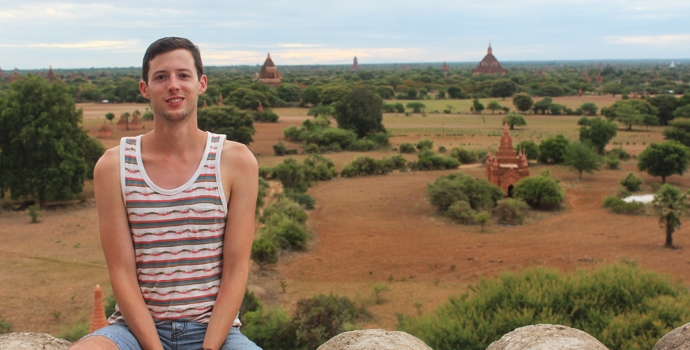Evan Rankin, 2L, was an International Human Rights Program (IHRP) intern at the UN Economic and Social Council for Asia and the Pacific (Thailand) during the summer of 2014. This report was first published in the IHRP's Rights Review magazine.
The spread of HIV can be impacted by laws in very specific and usually predictable ways. As a result, HIV activists and outreach workers must seek to intervene in cases where courts are interpreting, upholding, or altering certain legal principles. Failing to do so can allow courts to remain ignorant of the serious impacts their decisions may have on the spread of HIV and on the lives of people with a significant risk of infection (termed “key populations”). To illustrate the importance of activists’ involvement, I will contrast two recent decisions of the Supreme Court of India and briefly explore why and how these decisions are likely to impact HIV and key populations.
The first decision, National Legal Services Authority v Union of India and Others (NLSA), recognizes the constitutional right of transgender individuals to live with dignity and autonomy. It requires state recognition of the gender with which one self-identifies, rather than the one which was assigned at birth. The decision also classifies transgender individuals as a “socially and educationally backward class” which entitles them to additional rights, such as guaranteed spots in educational institutions, under the Indian Constitution.
In the second decision, Koushal v Naz Foundation (Naz Foundation), the Supreme Court overturned a lower court judgment and found section 377 of the Indian Penal Code, which criminalizes same-sex sexual behaviour, to be constitutional. Section 377 is the infamous colonial sodomy law criminalizing "carnal intercourse against the order of nature." As a result, homosexual acts will attract criminal sanctions in India. In contrast to NLSA, the judges in Naz Foundation effectively ignored the argument that rights to dignity and autonomy were violated by the provision, and rejected the use of foreign precedents ruling similar provisions unconstitutional. The Supreme Court instead used the thinly veiled justification that s. 377 could stand because Indian “social conditions” do not accept homosexuality, and that there simply are not enough LGBT persons in India who would experience victimization as a result of the application of s. 377.
The key to understanding how these decisions impact HIV programming in India is through the concept of stigma: that is, the forceful social disapproval that compels people to hide their identities or behaviours. Stigma against those living with HIV in India makes it difficult for HIV programs to reach their target populations. Decreased program access means less education and empowerment, which can lead to increases in risky behaviour and higher HIV transmission rates.
Government-sanctioned stigma primarily comes in the form of laws used to violate a key population’s human rights. For instance, laws that criminalize cross-dressing are often used to justify police repression of transgender people, leading to sexual exploitation (often at the hands of police themselves) and resort to drugs, both of which carry significant risk of HIV infection. Laws permitting the detention of suspected drug addicts can drive injection drug users further underground, where needle exchange programs are not available. In both cases, a violation of human rights leads to a likely increase in HIV prevalence. Thus, law and policy can interact in ways that harm already stigmatized key populations. In the case of anti-sodomy laws such as s. 377, same-sex behaviour is driven underground where anti-HIV programming (such as condom distribution) is less accessible.
For this reason, the UN and other organizations approach the HIV epidemic through the lens of human rights: if countries guarantee respect for the basic rights of key populations, they can reduce stigma and facilitate access to HIV programs. In turn, access to HIV programs will assist in halting the spread of the virus. Unfortunately, there is sometimes unwillingness on behalf of governments to formulate the necessary ameliorative policies for key populations. The result is ironic: the longer governments wait before targeting key populations with useful programming, the more likely it becomes that the epidemic will infect other members of the population. Affording basic human rights to all minorities can, as this example indicates, help to protect everybody in the society.
My work over the summer with the UN Economic and Social Council for Asia and the Pacific involved locating laws designed for, or abused for the purpose of, violating the rights of key populations. The array of laws used for this purpose in Asia-Pacific is staggering, and progress seems limited. Since politically motivated policy change is unlikely, activists are left with one option: the courts. Though this strategy does not always succeed, as demonstrated by NLSA in India, there is plenty of opportunity to challenge harmful laws. These opportunities are incredibly valuable: HIV is on the brink of degenerating into broader epidemics in a number of places, so any chance to facilitate outreach and reduce stigma is a chance we cannot afford to miss.
Read other 2014 IHRP intern reports in the IHRP's Rights Review magazine (PDF).

